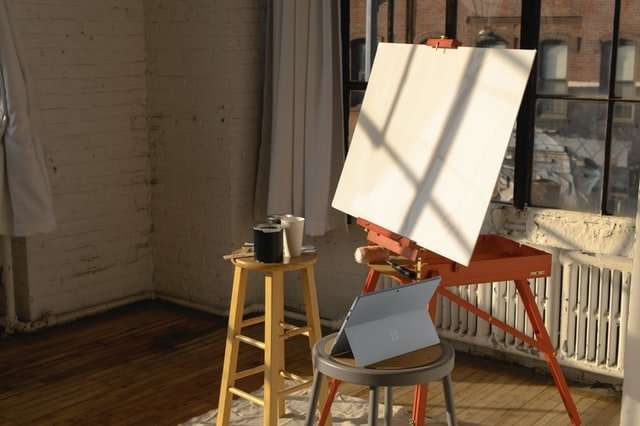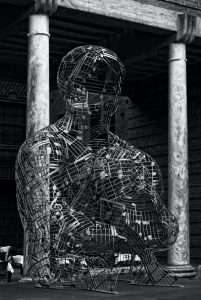Fine Art Materials is a blog about the materials used to make fine art, from antiquity to the present. I’m going to be looking at the historical context and how ideas about materials have changed over time.
I’ll also be looking at how artists use materials, for example in the work of Soutine or Michaelangelo or Monet. I’ll also be interested in lesser known artists and their use of materials. For example, there were several African-American artists who worked primarily in metal during the mid-twentieth century.
Fine art materials are often overlooked as a subject of study. Fine art materials are the physical resources that artists use to create their work. The most obvious examples are paint, paper, canvas, and clay. But, there are many other examples of fine art materials such as quills and ink, metal plates and etching presses, found objects and other sculptural materials.
Other examples of fine art materials include photographic processes such as the daguerreotype, the calotype, the gum bichromate process, platinum prints and photogravure; photographic media such as film and digital storage devices; engraving tools such as burins and crayons; printmaking tools such as chisels and linoleum blocks; printing presses such as letter presses, platen presses, and lithography presses.
Opera is a form of fine art that combines all of these elements into one presentation including music composed for voice or instruments (including operatic soloists and opera choirs), acting (including opera dancers), scenery which may be elaborate set designs or simple props (which may be complex), costumes (which may range from simple white shirts to extravagant dresses), lighting design (which may range from minimalistic to very elaborate) including changes in brightness or color
This website is intended to provide a modest resource for the history of fine art materials and their current use. The focus is on traditional media, that is, painting, drawing, printmaking and sculpture. In this context fine art means the visual arts as opposed to crafts or applied art. The materials have been chosen with respect to their importance to the development of fine art practice over the last 500 years.
Artists’ materials are generally chemical in nature. To a lesser extent they can also be mechanical or electronic in nature. It is this diversity that makes them interesting.
Artists’ materials are not a subject of general interest and so they are little understood by people outside the practice of fine art. This website attempts to fill in some of these gaps in general understanding by providing basic information about historical use and current use of materials.
An artist working today will often rely on a great deal of knowledge gained from past practice. This knowledge can come from technical manuals, workshops, exhibitions and even courses at Universities and Art Schools. It is important to recognise that although artists’ materials may be purchased from commercial suppliers, their selection is still guided by what has gone before rather than what is available now. This reliance on tradition ensures that there is a continuity that links one generation to another
The history of art materials is a complex story. The materials available to artists have long been limited by the materials available to others. For example, the pigments of ancient Egypt were made from the minerals in the earth surrounding them, and the colors that could be made in this way were limited by what was locally available.
Titian (1488-1576) was one of the first painters to use natural ultramarine blue, a pigment derived from lapis lazuli which came from mines in Afghanistan and was then imported into Venice. It was very expensive, so he used it sparingly and was careful not to overuse it. Artists then liked to use color in a very obvious way: they would often put more color on the picture than we might think appropriate today.
The Romantic artist JMW Turner (1775-1851) had different ideas about how to use color, and he developed new paints that allowed him to make his bold, broad strokes with soft color transitions. These new paints were called “oils” because they were made with linseed oil as a binder instead of egg yolk or some other substance. Oil paints are still used for fine art today. They are applied in thin layers with a brush or palette knife rather
The art studio is a place where artists have the freedom to develop their ideas, to experiment and make mistakes. It is a place of solitude and reflection where the artist has time to explore new concepts, materials and methods. It is a place of intense activity and deep thinking where artistic creativity can be fully expressed. It is a place of aesthetic pleasure and critical judgment where the finished work can be critically assessed.
We think about the different kinds of art material, their history and properties, as well as how they are produced. We also discuss issues relating to contemporary artists’ materials, such as sustainability, animal rights and recycling.
Very much enjoyed this book. Will post more reviews later!
Artists, like writers, are often divided into those who care about the technical aspects of their art and those who don’t. But what is meant by that? The technical aspects of writing include diction and spelling, sentence structure and grammar, plot and character development. Because most writers use computers to write these days, their ability to manipulate words electronically has become a major part of the standards by which writers are judged.
For artists, though, the standards for technical skill are different. They may paint more quickly on a digital canvas than on an easel or work with a computer to produce sculptures that would be impossible to carve from stone. Even so, many artists insist that they’re not doing anything that isn’t done with brushes and chisels; they just have more tools for doing it faster or in different ways. Painting itself is unchanged by the advent of computers; it’s just easier now to do it badly but better to do it well.
Artists know that their work will be preserved in books and galleries long after their death. And so the materials they use matter to them. A painting made with cheap paints won’t look as good five hundred years from now as one made with quality materials will.*



